| Lash preparing to dive in Bali |
MY GUIDE TO SCUBA DIVING IN BALI
Bali is one of the most famous of Indonesia’s 1000+ islands, located just north of Australia and south of Singapore. Bali is not actually well-known for its diving, but it should be! Bali’s diving is fantastic!
Most likely, Bali’s diving wonders are eclipsed by it’s other points of fame: some of the world’s best surfing, beautiful long sweeping beaches, 5-star resorts, and a booming party scene as well as Bali’s world-renowned, distinctive cultural arts which include paintings, wood and stone carvings, gamelan music, traditional dance/ theater, beautiful silk and batik fabrics, and astounding traditional architecture. These artistic traditions spring from Bali’s Hinduism, which also makes Bali unique within Indonesia, a predominantly Muslim country. Bali is truly a unique place on Earth!
With all THAT going for it, perhaps it’s no wonder Bali’s amazing underwater world is less known. Pity because Bali’s reefs rank right up there with the best in the world and are a great place for underwater photography. Here’s what’s in store for divers under Bali’s seas:
* mola-molas, also known as sunfish. Bali is one of the few places in the world to see mola-molas.
* manta rays
* colorful, densely-packed, healthy reefs
* US Liberty Wreck
* black sands and stone beaches
* great macro life, including many rare species such as harlequin shrimp, frogfish, ribbon eels, nudibranches, ghost pipefish and more.
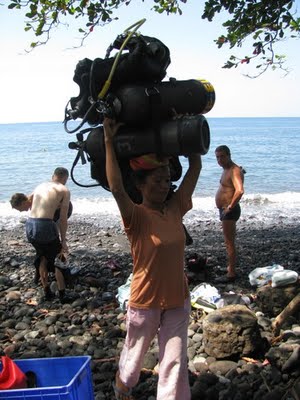 |
| Tulamben, Bali’s local dive porters |
In addition, a diving experience unique to north Bali are Bali’s ‘dive assistants’: local women who carry divers’ tanks and equipment on their heads between the parking areas and dive site entry points. Until I saw those women, I’d always thought I was a pretty strong chick. They beat me hands down. Truly amazing.
Bali is a large island with several different beaches, communities and dive sites. Each area has its own unique character and attractions. Likewise, diving areas are quite diverse. I roughly divide them into southern diving sites and northern diving sites. South Bali offers advanced diving from boats with generally strong currents, deeper sites, and cold water. In complete contrast, northern Bali offers very warm, generally calm, clear waters with mainly beach-entry dives on stone or black sand beaches. Dives are also done from the lovely local Balinese fishing boats, called ‘jukung’.
Off Bali’s south coast are 3 small islands: Nusa Penida, Nusa Lembongan and Nusa Ceningan. Several exciting dive sites are located there, including some beautiful reefs and sites for spotting mola molas and mantas. However, aside from the manta site, the dives are considered advanced because of conditions created by ocean currents sweeping through the channel between Bali and the smaller islands. This surging ocean water often creates very strong currents which at times can be quite dangerous. In addition, surface waters can get very choppy between Bali and the islands. Finally, the water temperature often drops to just 17C at it’s coldest in August and September. That’s astoundingly cold water for a location just 8 degrees from the equator.
| beautiful reef fish hovering on hard coral reef |
If you’re an advanced diver who’s comfortable with currents, can handle cold water and sometimes rough seas, you have the opportunity to see some amazing sights. One of the most famous sites is Manta Point. There, in quite shallow water of only 6-18 M, you can watch up to a dozen huge manta rays slowly gliding through the water, sometimes right above you. It’s an incredible experience. Coral is not abundant but you might see large frogfish, stonefish, masses of blue-spotted rays, and other beautiful reef fish.
| Diver in Bali with mola mola |
Then there are the mola molas. What absurd-looking creatures! Imagine the front half of a huge fish, chopped off blunt in its middle, back end gone. Then add large shark-like fins, one top and one bottom, sticking out bluntly. That’s a mola mola. They resemble a short bullet with fins. Bizarre. Nusa Penida island is one of the few places in the world to see them. However, the main mola mola season is quite short: August to Sept/Oct. Mola molas love cold, deep water. To observe them, you’ll have to bear 17-18C temperatures and generally dive quite deep: 30M- 40M. Like I said, it’s advanced diving.
The area also offers several beautiful reef dives, mostly along walls packed with soft corals, sea fans, sponges and hard corals. All of these dive sites are reached by boat from 3 mainland beach communities in South Bali, namely, Sanur, Padang Bai, and Candidasa. Chose a top of the line, professional dive shop because of the advanced diving conditions. I can recommmend Bali Ocean in Sanur. www.baliocean.com
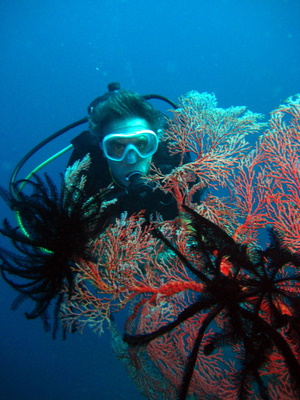 |
| diver in Bali with seafans and feather stars |
South Bali also has 2 other diving areas, namely Padang Bai and Candidasa. Both are small tourist towns on the coast. Dive sites are accessed by boat and most sites have strong currents and chilly to cold water. Dive sites offer beautiful coral and sponge-packed reefs with a huge variety of colorful reef fish. Sites are well worth the trip if you’re comfortable in currents. Padang Bai also offers one calmer reef, just offshore. You can see turtles, sharks, and a variety of reef fish living on a spectacular, healthy, colorful coral reef.
Guide to north Bali diving:
North Bali basically has 2 main dive areas. In Bali’s far northwest is Bali West National Park, which encompasses reefs at the small island of Nusa Menjangan. To be honest, I haven’t dived there, so I can’t give any first-hand descriptions. I’ve heard from many divers that Menjangan’s reefs are quite beautiful.
Bali’s northeast region is collectively known as Amed. It’s sometimes further divided into 2 areas, Tulamben and Amed. In terms of diving, I consider the region one extensive area. All dive shops access the same diverse dive sites scattered along the coast. Diving is year-round, though conditions are sometimes rough and murky in the short rainy season, roughly Jan.- March. The main dive season, in terms of popularity, is roughly July to October. Usually the sea is calm, both on the surface and underwater. Sea temperatures hover at 27-29C. Warm! Visibility varies greatly, ranging from only 5M to over 30M. 10M- 20M is the norm. These conditions offer diving for all levels of divers.
The most famous and most popular dive site in northeast Bali is the USAT Liberty Wreck. It’s quite spectacular and sits just off shore in 3M to 30M of water. It’s proximity to shore makes it an unusually easy wreck to access. Even snorkelers visit the Liberty most days, checking it out from the surface.
| trevally schooling at Liberty Wreck, Tulamben, Bali |
What makes The Liberty so spectacular are several factors. First of all, it’s HUGE: 120M in length by 30M in width. The ship is somewhat broken up, but you can clearly see the stern, bow, canons, wheels, doors, ladders, rooms and windows. In my opinion, the most amazing aspect of this wreck is the silhouette of the ship, with its many windows and rooms to peer into.
Secondly, Liberty is completely covered in soft corals, hard corals, seafans, and sponges, making it very colorful and even more scenic. Third, a gigantic school of trevally swarm and funnel around the ship almost daily. The school changes locations constantly. It could resemble a ‘tornado’ beside the ship, be swarming the ship, or funneling above the sand in shallow water nearby. This trevally mob is an amazing site. In addition, The Liberty supports lots of macro life, including leaf pipefish, frogfish and a variety of nudibranches. The site is worth diving several times.
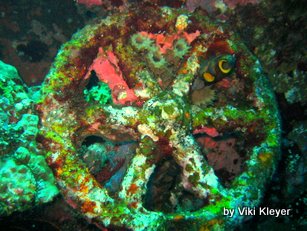 |
| wheel on the USAT Liberty Shipwreck, Tulamben, Bali |
Besides the Liberty Wreck, there are more than a dozen fantastic dive sites stretching along the coast, all within a 30 min drive of the dive shops. These consist of walls that drop to over 70M and a variety of gradual sloping reefs. Most reefs are in excellent condition, though some sections of the coast have reef that have been reduced to rubble by dynamite fishing. It’s easy to avoid those areas, but also quite educational to see reef recovery in progress. Each dive site offers a rather different habitat, even though they are fairly close together. Some sport colorful hard corals, some showcase great swaths of soft corals, some are packed with a variety of unusual sponges. Some offer a fairly good chance to spot sharks, though sharks are uncommon in Balinese waters. (They’ve probably all been eaten)
| sweetlips hovering under coral |
North Bali also offers excellent night diving! The Liberty Wreck is often dived at night. Several great beach night dives are also possible. One site, named Suraya, is becoming quite famous for its amazing night diving. In just one night dive there I’ve seen harlequin shrimp, tiny frogfish, a variety of unusual nudibranches, miniature octopus, unusual crabs, shrimp and other creatures. Diving Suraya, you keep stumbling on the next amazing thing and the next amazing thing, on and on. Fantastic!
Amed is also an excellent place to learn diving. For beginners Amed offers easy beach entries, calm clear waters, and easy shallow diving on beautiful dive sites. For advanced courses there’s deep diving, wall diving, drift diving, night diving, wreck diving, and a variety of other options.
| Amazing coral and seafan outcropping in Amed |
Many divers visiting Bali stay in south Bali, making day trips to the Amed coast for diving. I strongly recommend divers to stay in Amed for a few days or a week. There’s enough fantastic diving to keep you busy for several days. You can indulge in night diving. And the Amed area itself is intriguing: a taste of traditional Balinese life along the beautiful coast, with sweeping views of Mt. Agung, black-sand beaches, colorful fishing boats launching off in early morning and late afternoon, massages by local masseuses, and lovely boutique resorts beside the sea. It’s extremely peaceful and relaxing.
Go experience Bali’s amazing underwater world. If you or anyone you know is planning a dive vacation, consider vacationing in Bali. It’s amazing!
You might also enjoy:
Diving story: Amazing Bali Dive
5 photo galleries of underwater life: LashWorldTour Photo Galleries







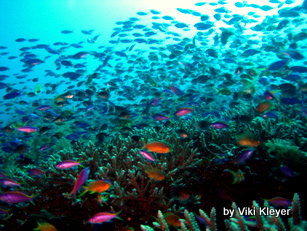
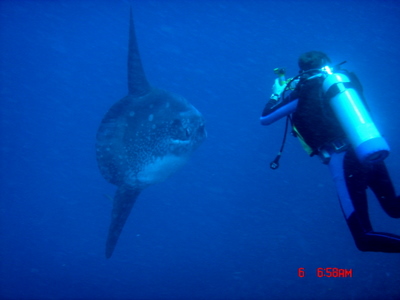


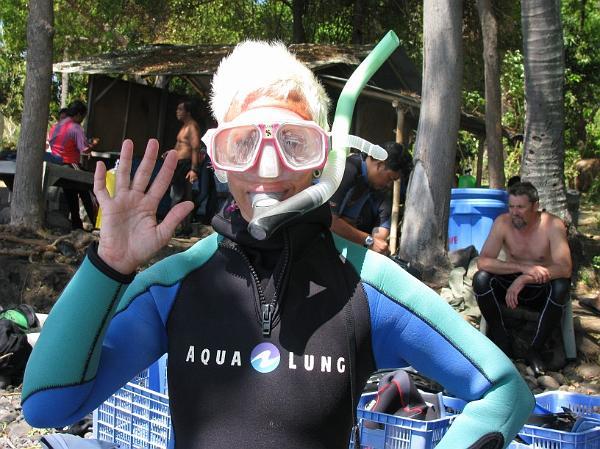
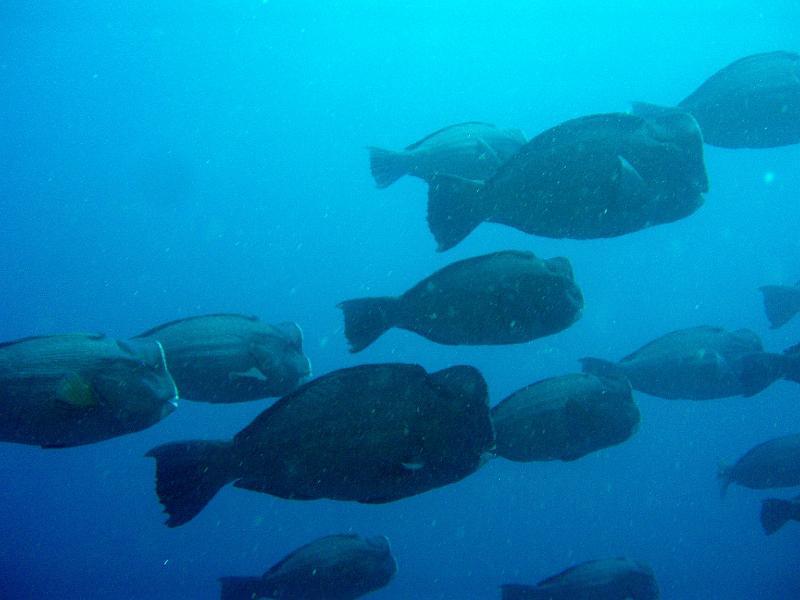

 Hi! I'm Lash, an American nomadic world traveler who's been traveling solo since 1998. I’m passionate about traveling the world nomadically and then sharing it all with you. I hope to inspire you to travel the world, to entertain you with tales from the road, and to help you reach your travel dreams. Welcome!
Hi! I'm Lash, an American nomadic world traveler who's been traveling solo since 1998. I’m passionate about traveling the world nomadically and then sharing it all with you. I hope to inspire you to travel the world, to entertain you with tales from the road, and to help you reach your travel dreams. Welcome! 




11 pings
Skip to comment form ↓
10 FREE THINGS TO DO ON TROPICAL ISLANDS AND BEACHES - LashWorldTour » LashWorldTour
2012/02/29 at 3:15 am (UTC 8) Link to this comment
[…] See you on an island! cheers, LashYou might also like:Guide to Scuba Diving in Thailand Guide to Scuba Diving in Bali Guide to Scuba Diving in Malaysia Scuba Diving at Tioman Island, Malaysia Sanur: South Bali Beach […]
LIFE OF A MACKEREL FISHERMAN IN AMED - LashWorldTour » LashWorldTour
2012/02/29 at 3:15 am (UTC 8) Link to this comment
[…] also like:Arak and Tuak, Bali’s Locally Brewed ‘Moonshine’ Salt Making in Amed Guide to Scuba Diving in Bali Balinese Hindu Ceremonies Gamelan: Bali’s Percussion OrchestrasLashWorldTour HOMEWhat kind of […]
LIFE OF A MACKEREL FISHERMAN IN AMED BALI - LashWorldTour » LashWorldTour
2012/02/29 at 3:16 am (UTC 8) Link to this comment
[…] STORETRAVEL BOOKS2012 CALENDARS wp_flash_img_show will display here (config: default)« GUIDE TO SCUBA DIVING IN BALILIBERTY SHIPWRECK DIVE SITE » LIFE OF A MACKEREL FISHERMAN IN AMED BALI 2010/09/15 by Lash […]
INTERVIEW WITH THEODORA SUTCLIFFE OF TRAVELS WITH A NINE YEAR OLD - LashWorldTour
2012/03/01 at 12:18 am (UTC 8) Link to this comment
[…] traveling through S AmericaInterview with Miro of Raising Miro – the son half of Raising MiroGuide to Scuba Diving in BaliPhoto Gallery: Road Trip Around Rural Bali .nrelate_popular .nr_sponsored{ left:0px !important; } […]
PHOTO GALLERY- NUDIBRANCHES: CORAL REEF'S LITTLE 'CANDIES' - LashWorldTour
2012/06/12 at 5:02 pm (UTC 8) Link to this comment
[…] Check out this sampling of these fabulous marine creatures. SEE FULL GALLERYYou might also like:Guide to Scuba Diving in Bali Guide to Scuba Diving in Malaysia Guide to Scuba Diving in Thailand Photo Gallery: Amazing Sea Life […]
LIFE OF A MACKEREL FISHERMAN IN AMED BALI - LashWorldTour
2012/06/12 at 5:29 pm (UTC 8) Link to this comment
[…] also like:Arak and Tuak, Bali’s Locally Brewed ‘Moonshine’ Salt Making in Amed Guide to Scuba Diving in Bali Balinese Hindu Ceremonies Gamelan: Bali’s Percussion OrchestrasLashWorldTour HOMEWhat kind of […]
TRAVEL INTERVIEW- THEODORA SUTCLIFFE- TRAVELS WITH A NINE YEAR OLD » LashWorldTour
2012/06/17 at 5:53 pm (UTC 8) Link to this comment
[…] traveling through S AmericaInterview with Miro of Raising Miro – the son half of Raising MiroGuide to Scuba Diving in BaliPhoto Gallery: Road Trip Around Rural Bali (function() {var s = document.createElement('SCRIPT'), […]
Lash from LashWorldTour.com | ContemporaryNomad.com
2012/09/11 at 4:43 am (UTC 8) Link to this comment
[…] written diving guides for Thailand, Malaysia and Bali, all on my […]
Five Great Scuba Diving Destinations Around Europe » LashWorldTour
2014/02/06 at 2:40 pm (UTC 8) Link to this comment
[…] My Guide to Diving in Bali […]